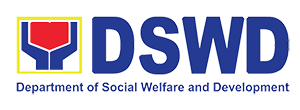In line with the recent poverty statistics, the Department of Social Welfare and Development (DSWD) emphasized the importance of studying the different factors affecting poverty.
This is in support of the article entitled “Are poverty and inequality changing?” written by professional statisticians, Jose Albert and Arturo Martinez, Jr., which was published last month in the online site, Rappler.com.
DSWD Secretary Corazon Juliano-Soliman agrees with the article’s premise that, “it is not the case that economic growth has not led the poor out of poverty”.
Sec. Soliman said that poverty is a multi-dimensional issue, which must be properly deconstructed and analyzed to understand the whole picture.
So why do poverty and inequality rates in the country remain unchanged despite GDP growth? According to Albert and Martinez, this is because “for every household that experienced upward income mobility, there is approximately one household that experienced downward income mobility.”
So even if 7.9% of the population who were poor in 2003 became non-poor in 2006, 8.28% who were non-poor in 2003 became poor in 2006.
Albert and Martinez attribute this to the volatility in income and expenditure distribution, which are strong offsetting forces preventing poverty rates and income inequality from changing.
To combat this, Sec. Soliman said that DSWD implements social protection programs such as the Pantawid Pamilyang Pilipino Program, Sustainable Livelihood Program (SLP), and Kapit-Bisig Laban sa Kahirapan Comprehensive and Integrated Delivery of Social Services-National Community Driven Development Program (Kalahi-CIDSS) to ensure that the poor do not slide deeper into poverty. Furthermore, these programs contribute to inclusive growth, allowing the poor to actively contribute and directly benefit from economic growth.
In a previous article on Pantawid Pamilya by Albert, he also pointed out that it was suggested during a DSWD-organized forum that poverty would have worsened without the Pantawid Pamilya.
National Economic Development Authority (NEDA) Secretary Arsenio Balisacan also reiterated this assumption when he mentioned that Pantawid Pamilya might have tempered the effects of disasters and the rising prices of commodities, factors which put the nearly poor households at risk of falling into poverty.
For this year, the DSWD has included the institutionalization of Pantawid Pamilya in its legislative agenda. It also has intensified its partnership with the Department of Health, Department of Education, and local government units which provide the supply side for the program.
Sec. Soliman also announced that the DSWD is set to undertake the second assessment of poor families through the National Household Targeting System for Poverty Reduction (NHTS-PR), which aims to update its poverty database.
Aside from identifying who and where the poor are, this second round of assessment will also determine the non-poor and those families on the borderline of poverty to ensure that they are also provided with the right interventions they need to sustain their current status and not to plunge further into poverty.
“I agree with the observations made in the article that policy instruments must also be formulated to assist the non-poor who are faced with economic risks,” Sec. Soliman said.
To ensure that income shocks may not hamper the thrust for inclusive growth and ensure sustained prospects on the country’s development, Albert and Martinez urge policymakers to develop public policies on risk management, such as adequate insurance and social protection infrastructure.
Sec. Soliman echoed this, stressing that an in-depth knowledge of poverty trends and statistics will help the government in planning, synchronizing, and maximizing the effects of its various poverty reduction policies and programs.. ###


